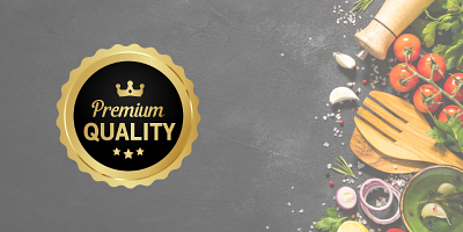I’m going to kick things off by introducing you to Royal Canin, a brand that’s been a player in the dog food game for over half a century. Since its founding in France in 1968, Royal Canin has carved out a name for itself with a steadfast dedication to science-backed pet nutrition.
You’re going to find out about the extensive product line that Royal Canin offers. Their menu caters to virtually every type of pooch out there – from the tiniest teacup Chihuahua to the most majestic Great Dane, and even takes into account specific dietary needs brought on by various health conditions.
This isn’t just about selling dog food; it’s also about a commitment to precision. Royal Canin takes pride in its rigorous approach to canine dietetics, leaning heavily on scientific research, and partnerships with breeders, vets, and pet professionals to develop diets that match the exact nutritional requirements of dogs.
With all this focus on their specialized approach, I’m here to help you navigate the realities behind their glossy packaging. Is this brand really the crown jewel of dog diets? Does the quality justify the price? These are important tidbits I’ll explore, particularly as we segue into a deep dive in the next section on the exact ingredients that Royal Canin puts into their recipes and why your furry friend deserves the best.
Breaking Down Royal Canin’s Ingredient Quality

Royal Canin doesn’t pull any punches when it comes to the ingredients they choose. They’re on a mission to tailor nutrition to the specific needs of dogs, and that starts with what goes into each kibble. Let’s peek behind the curtain and see what’s actually ending up in your dog’s bowl.
Each recipe Royal Canin rolls out is a blend of proteins, fibers, and carbohydrates, but there’s more to it than just the basics. They opt for quality proteins like chicken by-product meal, which, despite some mixed opinions, is high in nutrients and essential for a carnivorous diet. Carbs come from ingredients such as brewers rice and wheat, providing that much-needed energy.
But Royal Canin doesn’t just stop at a list of ingredients; they’re hot on the trail of quality assurance. Their sourcing practices are designed to secure ingredients that meet very specific nutritional profiles. That means no skimping on quality to save a buck.
And it’s not a one-man band running the show. Royal Canin leans on the expertise of a squadron of vets and animal nutritionists who orchestrate the formulation of their dog food. Together, they ensure each diet is complete and balanced, tuning each ingredient’s role to support health and longevity.
Transparency in ingredient sourcing and quality control can make or break trust in a pet food brand. I value the fact that Royal Canin conducts rigorous testing protocols to ensure safety. These tests screen for contaminants that could harm your furry friend, making sure each bag of dog food is up to snuff.
The Pros and Cons: Assessing Royal Canin’s Offerings

So you’re interested in whether Royal Canin is the right choice for your furry friend. Well, let me give you the scoop on what sets this brand apart, as well as some considerations to keep in mind.
One of the BIG perks of Royal Canin is its focus on tailored nutrition. They’ve got a lineup designed just for your pooch’s breed, size, and any specific health needs they might have. From Chihuahuas to Great Danes, it’s like a buffet where every dish is cooked up for individual tastes and dietary requirements.
And it’s not just about size or breed. If your dog has a sensitive stomach or is prone to certain health problems, Royal Canin’s prescription diets are formulated to address those issues head-on. It’s like having a custom meal plan by a doggie nutritionist.
But let’s talk about the price. Royal Canin is positioned as a premium brand, and your wallet will definitely feel it. This can be a bit of a hurdle, especially if you’re balancing a tight budget. It’s about choosing what resonates with you and your pet’s needs.
Some folks also argue that while the brand champions tailored nutrition, there are cheaper alternatives that might be just as suitable. It’s all about doing your homework and weighing up the cost versus the benefits.
Now, onto digestibility and taste—Royal Canin doesn’t skimp here. They’ve put in the work to ensure their formulas not only sit well with a variety of dogs but also have them wagging their tails at mealtime. Yet, taste is subjective, even for dogs, so there’s always a chance Rover may turn up his nose.
I really hope that this breakdown helps you weigh up the pros and cons. In the next section, I’ll summarize what makes Royal Canin stand out in the crowded pet food market and provide you with a clear list of pros and cons. This will pull together everything we’ve talked about, making your decision much easier.
Final Thoughts and Comprehensive Pros and Cons

I’m wrapping up this review with a clear-eyed look at what Royal Canin offers to you and your pooch. The brand’s focus on science-backed nutrition tailored to specific dog needs is genuinely impressive. I’ve combed through the consumer anecdotes and expert opinions to give you a rounded perspective that’s more than just numbers and facts.
Royal Canin isn’t just a dog food; it’s a program of pet health with feeding options for almost every kind of dog. Whether you have a tiny teacup poodle or a huge German Shepherd, there’s likely a Royal Canin food designed for them. But with that specialization comes a heavier price tag, which is something to consider if you’re balancing a budget.
So, here’s what we’ve gathered. The PROS: specialized formulas for different breeds, life stages, and health issues; high-quality ingredients with rigorous quality control; and the backing of the vet community. And the CONS: definitely the cost, and some pet owners might prefer more natural or grain-free options, which Royal Canin doesn’t focus on.
In my opinion, if you want premium tailored nutrition and can handle the price, Royal Canin could be a game-changer for your furry friend’s health and happiness. Remember, your first choice in dog food doesn’t need to be your last. You can always adjust your approach down the road, especially as your dog’s needs change with age and lifestyle.
(This post contains affiliate links and I may make a small commission for qualifying purchases which will not change your price at all.)
Choose something that resonates with your philosophy on pet care and your pet’s particular needs. A lot is happening very quickly in the pet food industry, with new studies and products constantly emerging. Keep informed, stay objective, and know that any choice made with care is a step towards a healthy, joyful pet.
We really hope that this review helps you find the best path for your canine companion’s nutritional journey. And as usual, feel free to leave a comment or question below.



